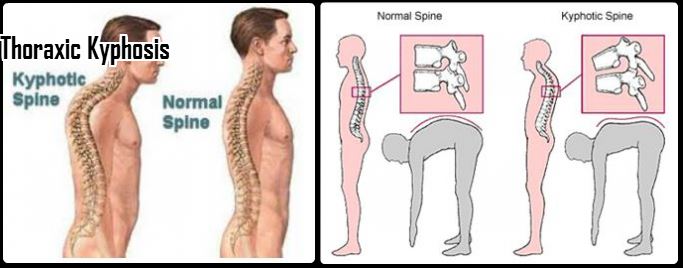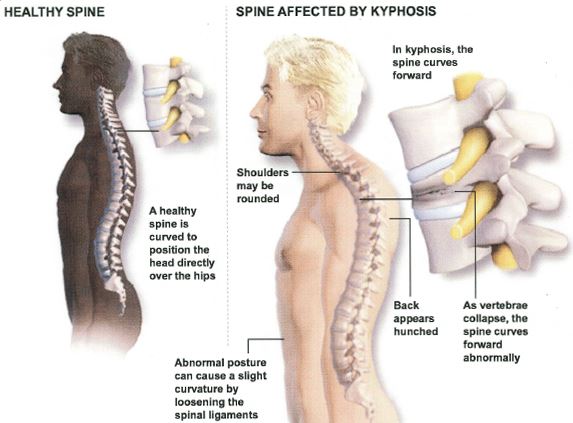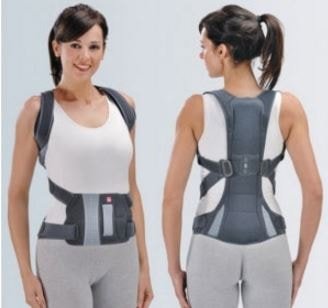Thoracic Kyphosis
What is Thoracic Kyphosis?
The human spine is separated into three different sections: the cervical spine, the thoracic spine, and the lumbar spine. A normal thoracic spine is taking the form of a “C” shape that is regularly curved with an opening of the “C” in the front part of the body which is referred to as the kyphotic curve.
The term kyphosis alone is a kind of curvature in the spine that is not normal wherein there is an exaggerated forward curve in the spine. Kyphosis is mostly common in the thoracic spine but could also affect the other areas of the spine, like in the lower back or the neck part.
Thoracic kyphosis arises when the natural curvature of the thoracic spine is bent too much. The lower back can get affected if the thoracic spine curves too much in an inward manner as the lumbar spine try to compensate for it.

What are the Symptoms of Thoracic Kyphosis?
Thoracic kyphosis can occur at any age and could affect both males and females. Symptoms of this condition can range from mild to severe, depending on the primary causes of the problem. The most common symptom is the appearance of poor posture together with a hump.

Other symptoms may include:
- Mild to severe pain in the back
- Back becomes stiff
- Person’s height will be minimized or reduced
- Muscle fatigue
- Trouble standing in an upright position that worsens over the day
In more serious situations, the person might notice the symptoms getting worse over time. The hump on the back can get bigger. In rare cases, it could result to neurologic symptoms due to the compression of the spinal cord.
Severe symptoms include:
- Frequent urination
- Weakness
- Loss of sensation
- Space in the chest can become limited and may lead to shortness of breath, chest pain, or failure of the heart.

Image 3 – Progression of kyphosis
What Causes Thoracic Kyphosis?
Thoracic kyphosis can be caused by many predisposing factors. The following causes include:
- Postural kyphosis – It mostly occurs to women than in men of any age and is being caused by slouching and poor posture.
- Osteoporosis – The bones are thinner and fragile to the point where it could break or fracture.
- Spina bifida – The spine has not formed correctly.
- Traumatic kyphosis – This happens when the vertebra is fractured and is misaligned from healing.
- Muscular dystrophy – A condition that is genetically acquired which causes a continuous weakening of the muscles.
- Spondylosis – A spine condition that is painful and generally happens as a person gets older.
- Scheuermann’s Disease – A disorder wherein the growth of the discs and spine grows abnormally.
- Paget’s disease – The new bone cells that could have been developed is disrupted resulting to the weakening of the bones.
How is Thoracic Kyphosis Treated?
A number of deformities caused by kyphosis are commonly treated through surgery. Plans of having a conservative treatment are less successful. The earlier the condition is surgically intervened, the better are the results, since the progression of the curve can be prevented.
The type of surgery varies on the essence of abnormality. If the patient chooses a non-surgical treatment, a serious observation is greatly required and close medical follow-up to stop any possible problems later.
Conservative treatments
These involve medicines, exercise, and various kinds of braces to support the spine. The physician might also recommend the patient to a physical therapist in order to calm the pain as well as improving strength and mobility.

Surgical treatment
Surgery can have a significant consequence that’s why it is only suggested if the patient can benefit more and outweigh the risks. Surgery is proposed due to the following:
- To relieve severe pain and discomfort
- The curve progresses some more
- Cosmetic purposes
Exercises
Here are some exercises to strengthen the muscles for individuals with thoracic kyphosis:
- Prone Extension exercise – The person lies down to strengthen the muscles of the upper back and reduce the curve.
- Foam rolling the thoracic spine – The person lies over a foam roll to mobilize the spine.
- Abdominal stretching – Stretching the abs can help since it could also mobilize the spine
References:
Scheuermann’s Kyphosis, Congenital Kyphosis, Diagnosis, Treatment Options at http://www.allaboutbackandneckpain.com/understandingconditions/kyphosis.asp
http://www.medicinenet.com/kyphosis/article.htm#kyphosis_facts
http://www.nhs.uk/Conditions/Kyphosis/Pages/Causes.aspx
Perriman DM, Scarvell JM, Hughes AR, Ashman B, Lueck CJ, Smith PN (2010 May 25). Validation of the Flexible Electrogoniometer for Measuring Thoracic Kyphosis. Spine (Phila Pa 1976).
Ulmar B, Gühring M, Schmälzle T, Weise K, Badke A, Brunner A (2010 Apr 28). Inter- and intra-observer reliability of the Cobb angle in the measurement of vertebral, local and segmental kyphosis of traumatic lumbar spine fractures in the lateral X-ray. Arch Orthop Trauma Surg.
Macagno AE, O’Brien MF (2006 Sep 1. 31). Thoracic and thoracolumbar kyphosis in adults. Spine. (19 Suppl):S161-70.
